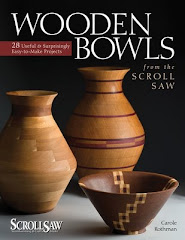Sunday, April 25, 2010
A shop of my own, at last!
Friday, April 23, 2010
One more sanding tip
Monday, April 19, 2010
Need help?
Tuesday, April 13, 2010
Ten Rules for Sanding Success
Ten Rules for Sanding Success
Unless you must remove a lot of wood quickly, sand in small increments and inspect your work frequently. Although sanding errors be used creatively, it’s better to go slowly and stay in control.
2. Match the grit to the wood
Coarse grits are too aggressive even for rough shaping of soft wood while harder wood needs the extra abrasiveness. Use the finest grit that will get the job done to avoid removing too much wood or leaving deep scratch marks.
3. Change grits gradually
Moving slowly through the grits lets you sand out scratches, not sand them smoother.
4. Keep it clean
Clogged sandpaper does not sand effectively and may burn the wood. Change paper frequently when hand sanding, and use a cleaning stick for mechanical sanders.
Too much pressure creates gouges and causes burn marks. Don’t make extra work in an effort to save time.
6. Defuse the disc
Disks rotate faster on their outer edges; the more aggressive sanding can quickly add unwanted curves. If you use the whole disc, hold work on the “up” side firmly to prevent flinging and its consequences.
Touch, as well as look, to catch irregularities. Use fingers to locate bumps and hands to check for symmetry.
When you think you’re done, put the work aside and look again when you’re fresh. You will always find something that you missed.
It’s better to live with a drill mark, a scratch, or a flaw in the wood than to ruin your project.
Machine sanding reduces stress on shoulders and arms, but there’s no substitute for a final hand sanding.




